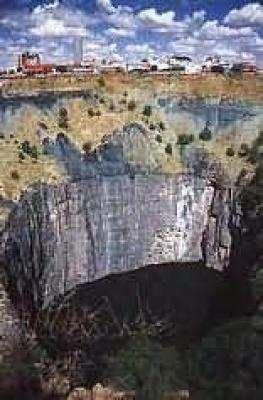Do you want to retrace the lives of the rough-and-ready diggers who made it all happen? Or experience life in Kimberley as it must have been during the diamond-rush days when races, lotteries, pubs and ballrooms made the town a very bright place indeed?
Then visit the Kimberley Mine Museum.
Consisting of original and carefully reconstructed buildings this open-air museum has preserved a great deal of the city's past. The first officially recorded diamond discovered in the country, the Eureka, can be viewed here.
Or you can sift through diamond-bearing gravel, looking for your own treasure.
Wander past one of Kimberley's oldest houses, a prefabricated construction imported from England in 1877, or the delightful old pub, Digger's Rest, one of the many pubs which flourish in those early days.
The tobacconist shop where Perilly produced his famous hand-made cigarettes, Barney Barnato's Boxing Academy, a reconstruction of farmer De Beers' homestead - they are all there.
The Big Hole itself is an astonishing sight. Mined to a depth of 215 metres, and with a surface area of about 17 hectares and a perimeter of about 1,6 km, it is the largest hand-dug excavation in the world. On 14 August 1914 work on the mine was suspended.
By that time 22,5 million tons of earth had been excavated, yielding 2 722 kilograms of diamonds.

